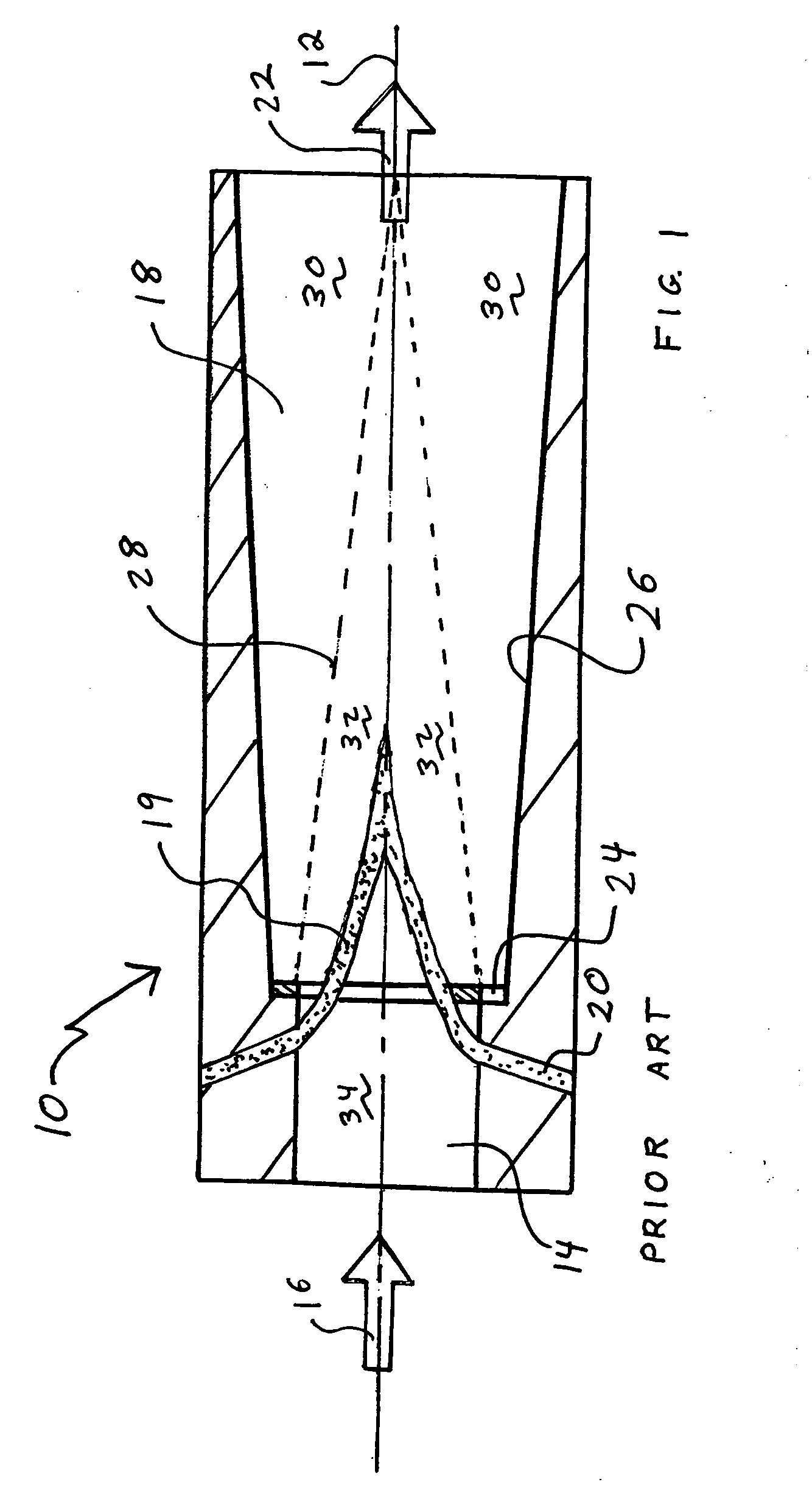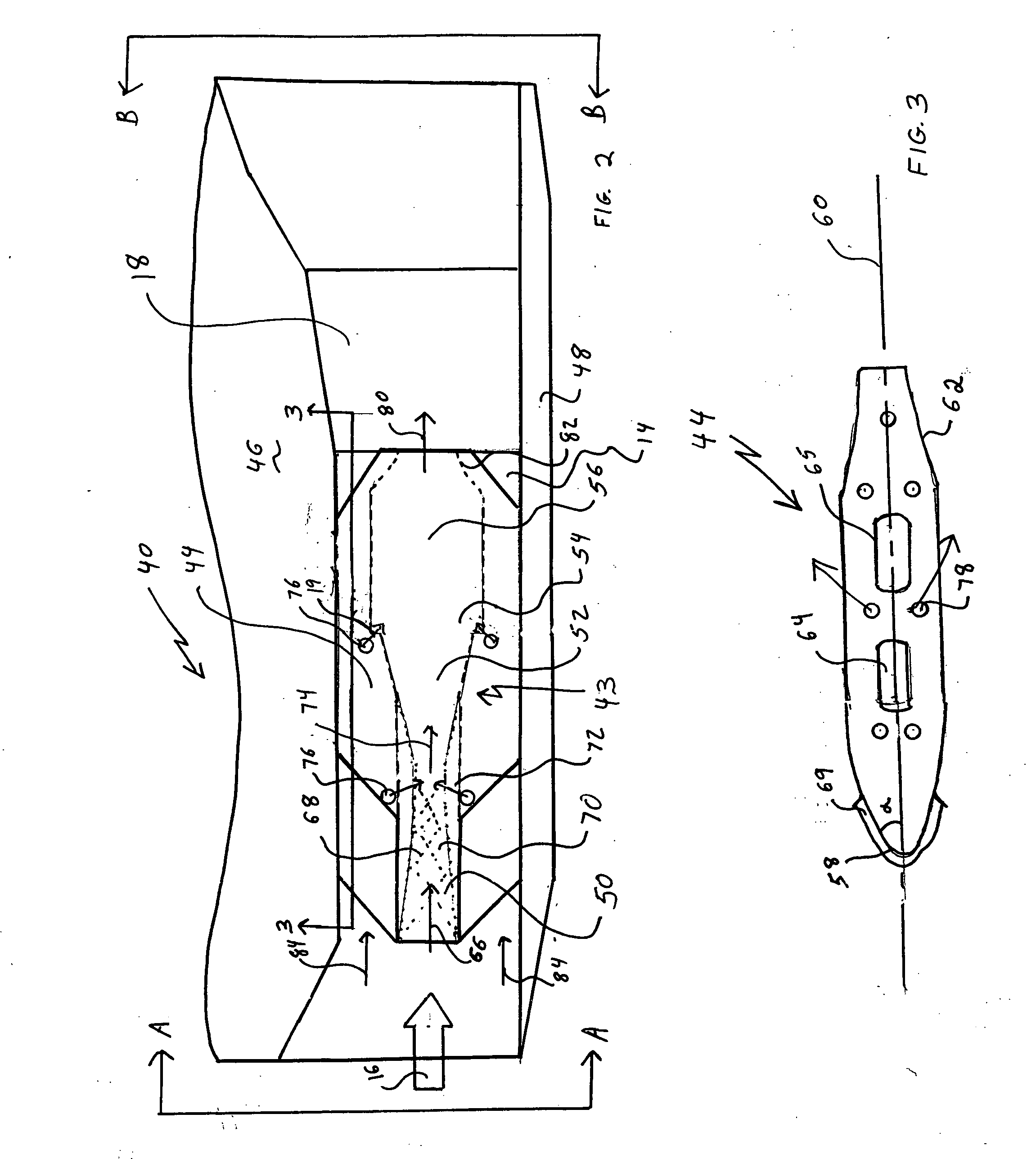Core burning for scramjet engines
a scramjet engine and core technology, applied in the engine field, can solve the problems of increasing costs and complexity, difficult to sustain combustion, etc., and achieve the effects of reducing the length of the scramjet combustor, and reducing the heat load of the combustor
- Summary
- Abstract
- Description
- Claims
- Application Information
AI Technical Summary
Benefits of technology
Problems solved by technology
Method used
Image
Examples
first embodiment
[0028]FIG. 2 illustrates a 2-D scramjet module 40 having a strut pilot 43 in accordance with the invention. The strut pilot 43 is fully contained within strut 44 that bridges a gap within the main isolator 14 extending between a body side 46 of a vehicle, such as a missile or the like and a cowl side 48. The strut 44 mounted strut pilot 43 includes a pilot isolator 50, a pilot diffuser 52, a pilot flameholder 54, a pilot combustor 56 and a pilot nozzle 82. It is noted that the strut pilot 43 is essentially a ramjet fully contained within strut 44. As illustrated in cross-sectional representation in FIG. 3, the strut 44 has a small leading edge radius 58 and a wedge shaped windscreen 69 that forms a relatively small angle, α, relative to a center line axis 60 to minimize air drag through the main isolator of the scramjet module. Trailing edge 62 is formed by a tapered boat tail shape with a similar angle relative to the centerline axis and may have bluff base for enhanced strength. T...
second embodiment
[0036]In accordance with the invention, FIG. 8 illustrates a main isolator 14 for a scramjet having an axisymmetric cross-sectional profile. A centerbody pilot pod 42 is mounted with axial symmetry along a center line axis of the scramjet. The centerbody pilot pod 42 includes a pilot isolator 50, pilot diffuser 52, pilot flameholder 54 and pilot combustor 56 and is essentially a dual mode ramjet (DMRJ) symmetrically disposed within the scramjet main isolator 14. In operation, the pilot receives pilot portion air 66 from the scramjet intake 16. The pilot portion air 66 is slowed in pilot isolator 50 by shock train 68 and further slowed in the pilot diffuser 52. Pilot fuel injectors 76 add fuel to the pilot portion air stream which is ignited by the pilot flameholder 54 and burned in the pilot combustor 56. The hot exhaust 80 exits the pilot pod to ignite the fuel and air mixture flowing around the centerbody pilot pod 42. The centerbody pilot pod 42 is supported by a plurality of str...
PUM
 Login to View More
Login to View More Abstract
Description
Claims
Application Information
 Login to View More
Login to View More - R&D
- Intellectual Property
- Life Sciences
- Materials
- Tech Scout
- Unparalleled Data Quality
- Higher Quality Content
- 60% Fewer Hallucinations
Browse by: Latest US Patents, China's latest patents, Technical Efficacy Thesaurus, Application Domain, Technology Topic, Popular Technical Reports.
© 2025 PatSnap. All rights reserved.Legal|Privacy policy|Modern Slavery Act Transparency Statement|Sitemap|About US| Contact US: help@patsnap.com



